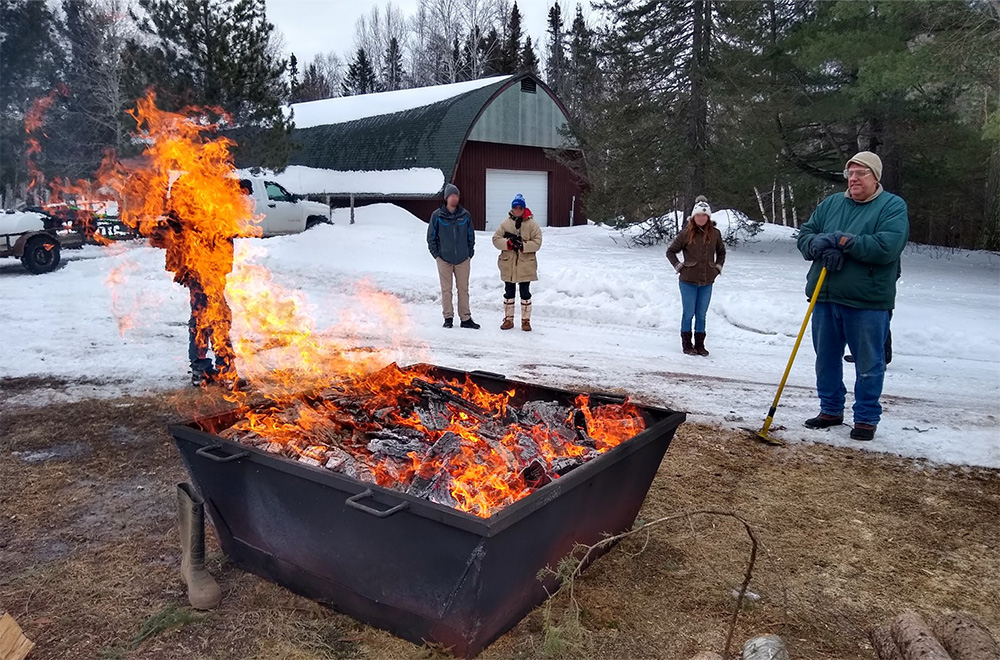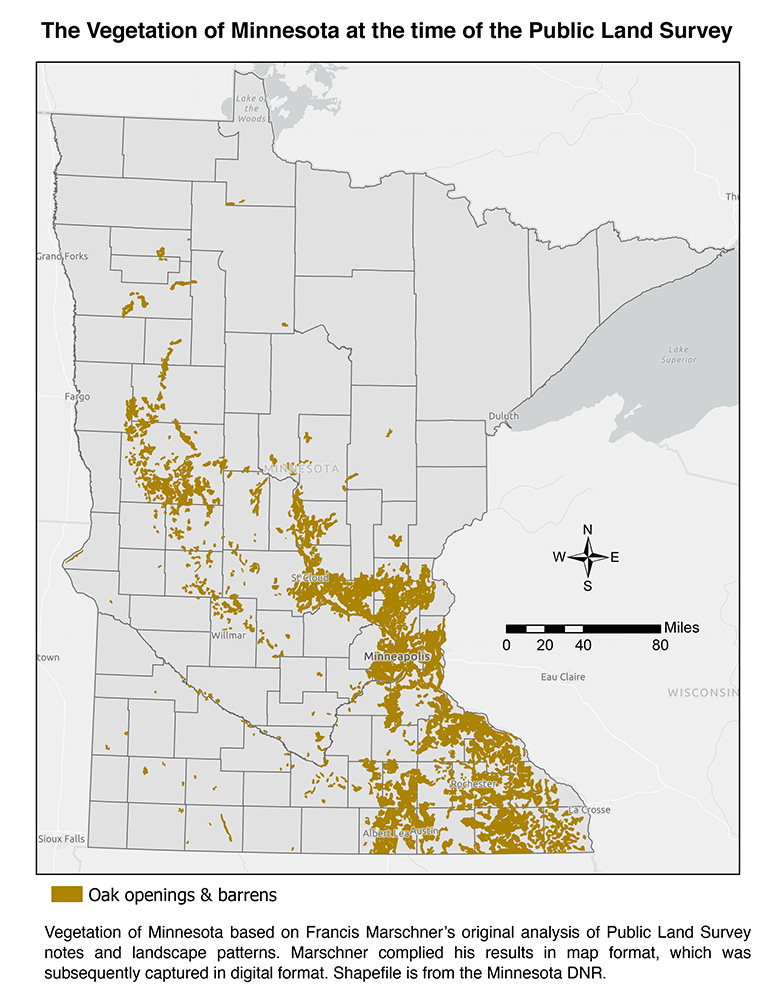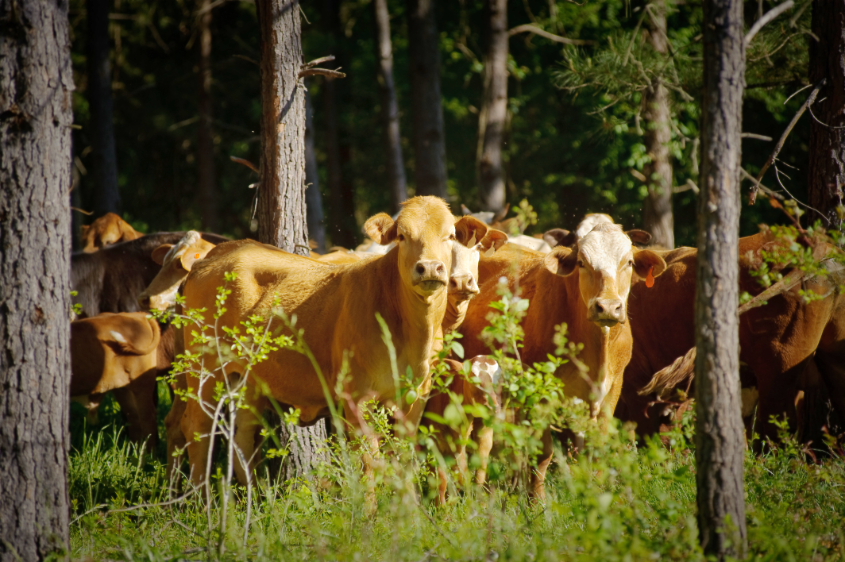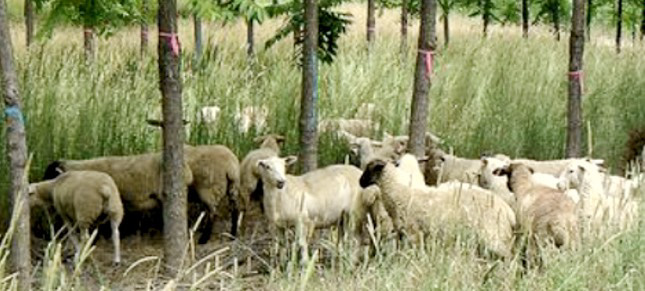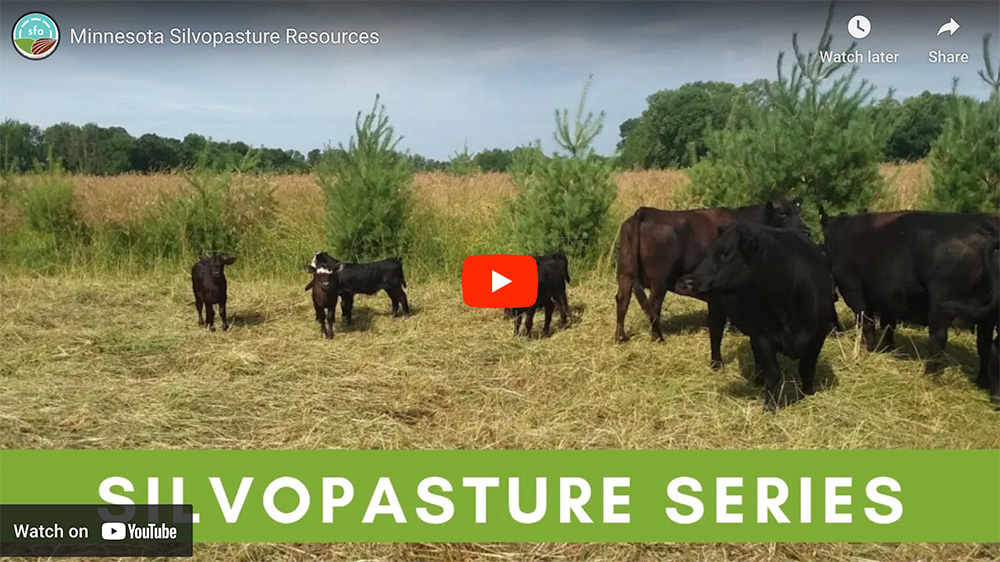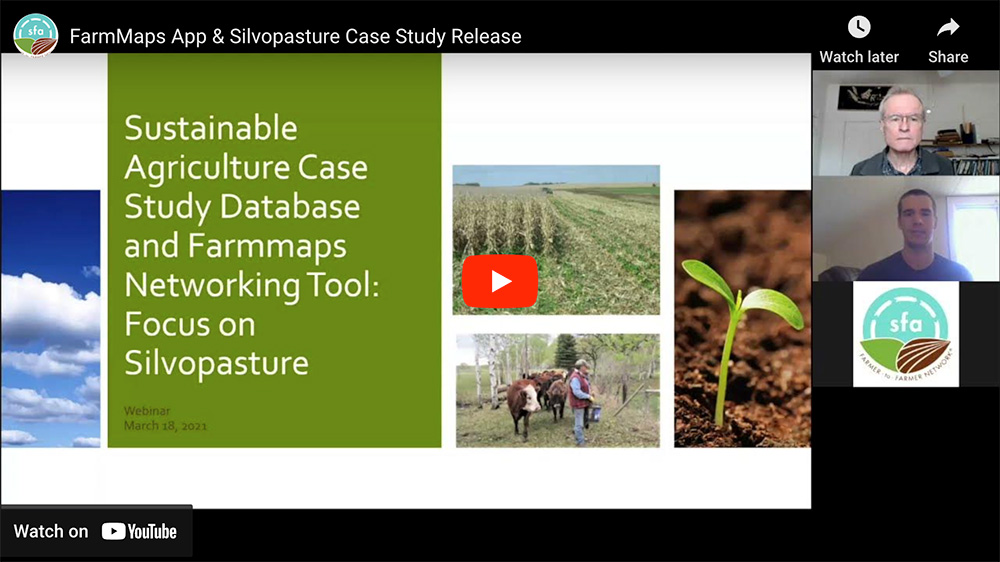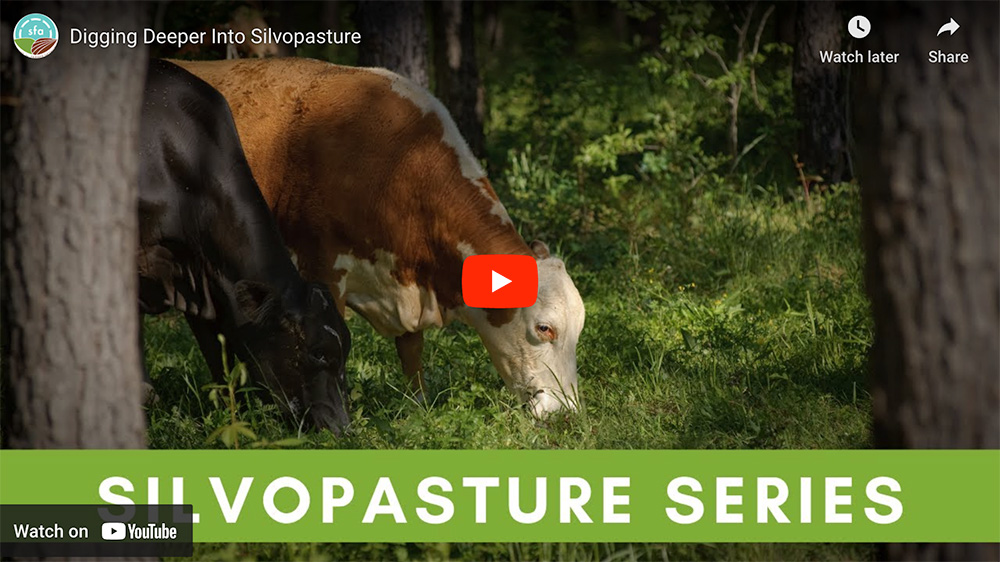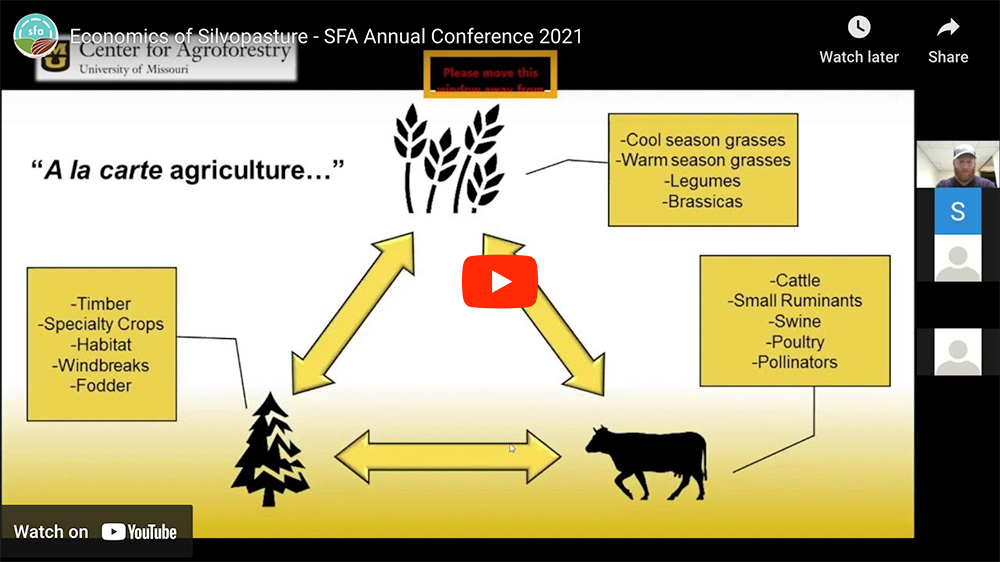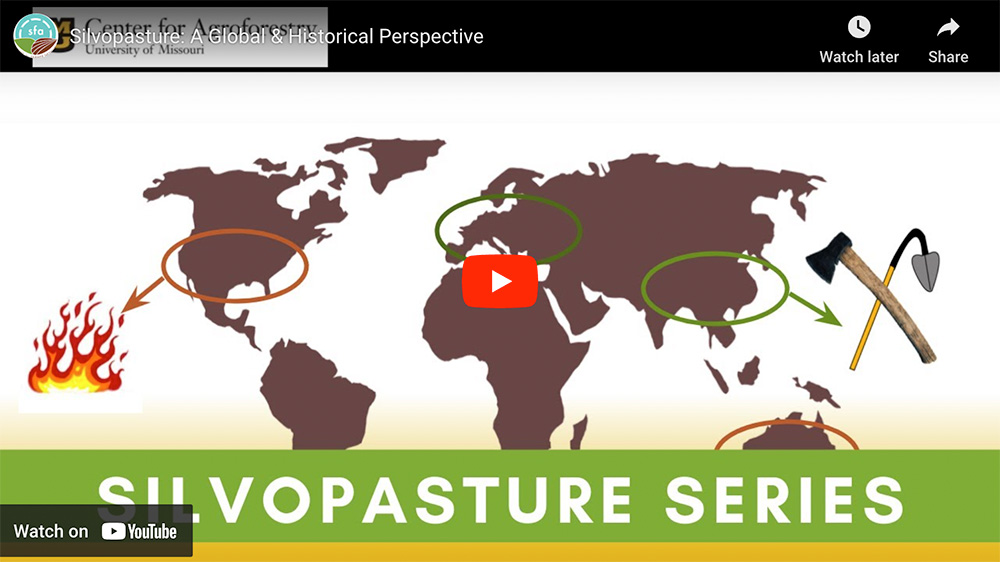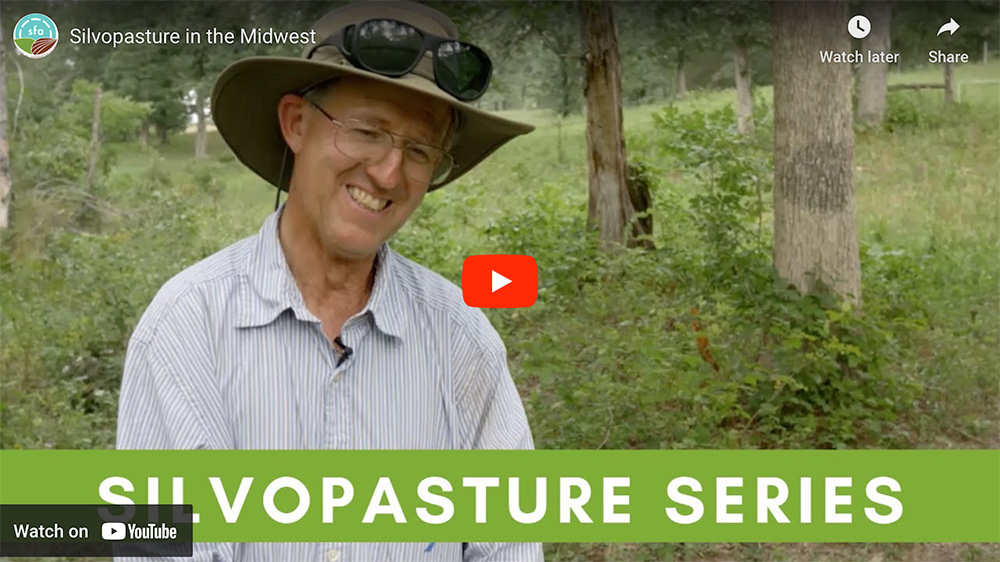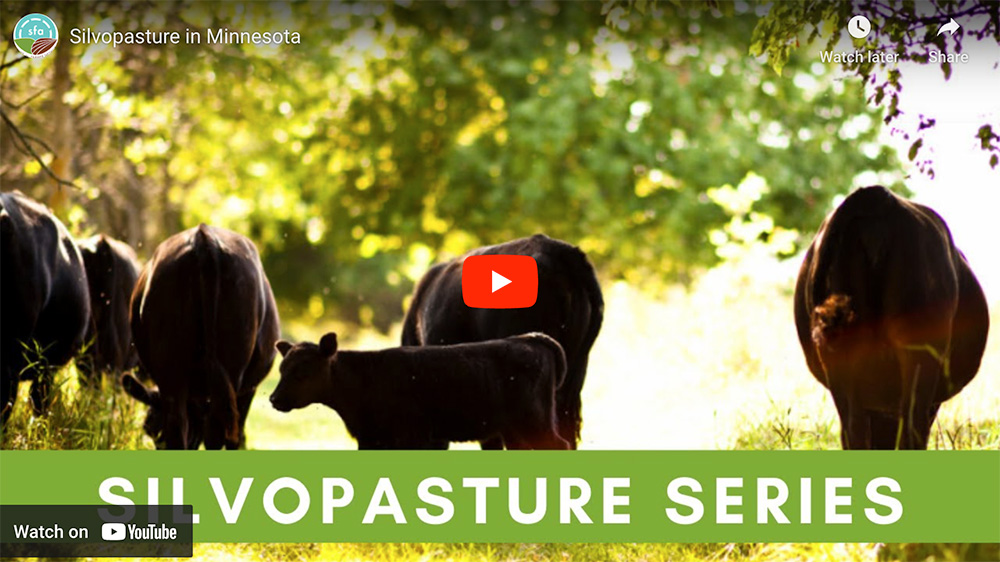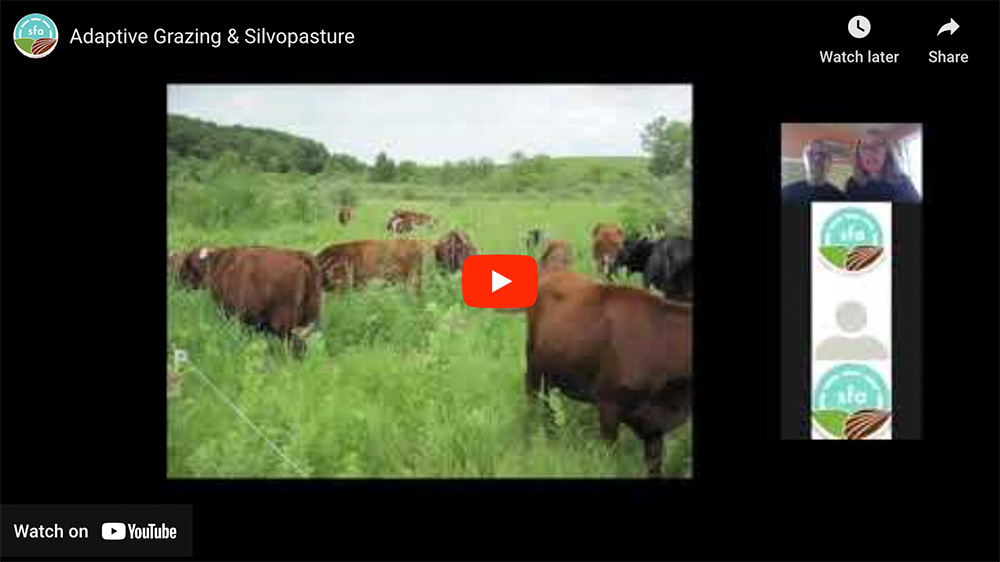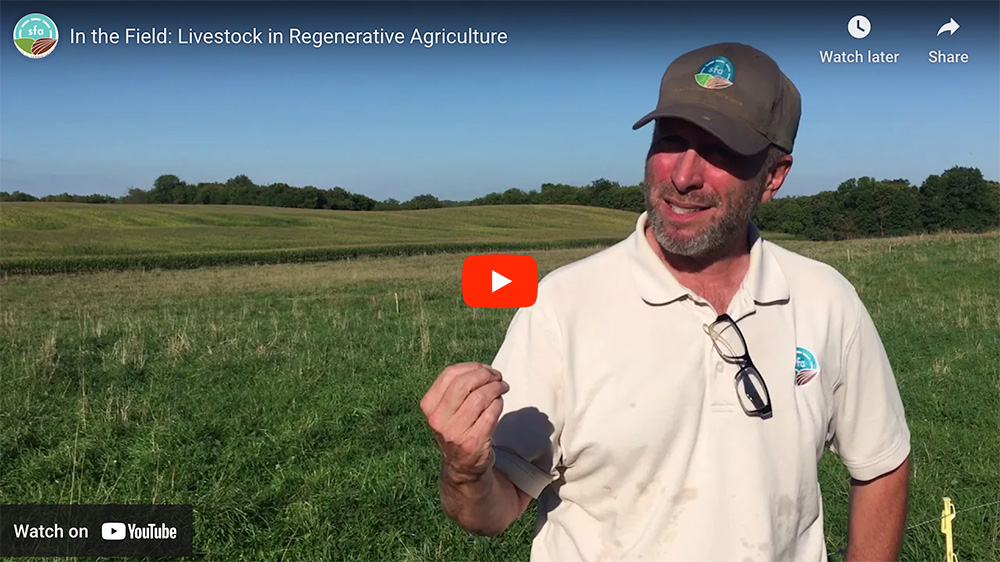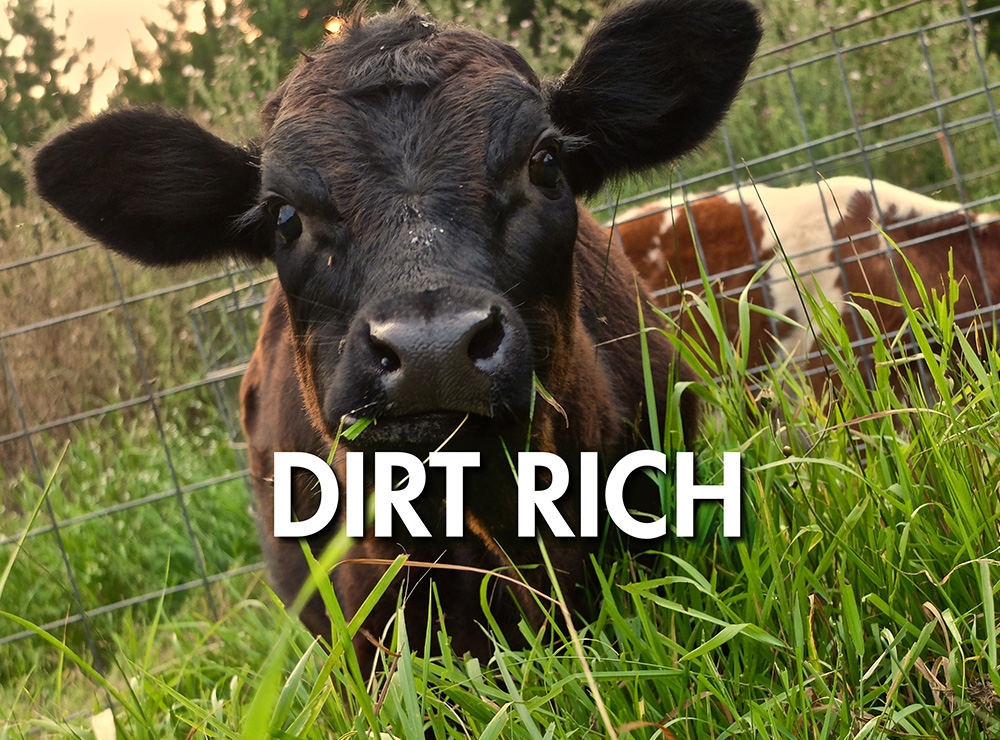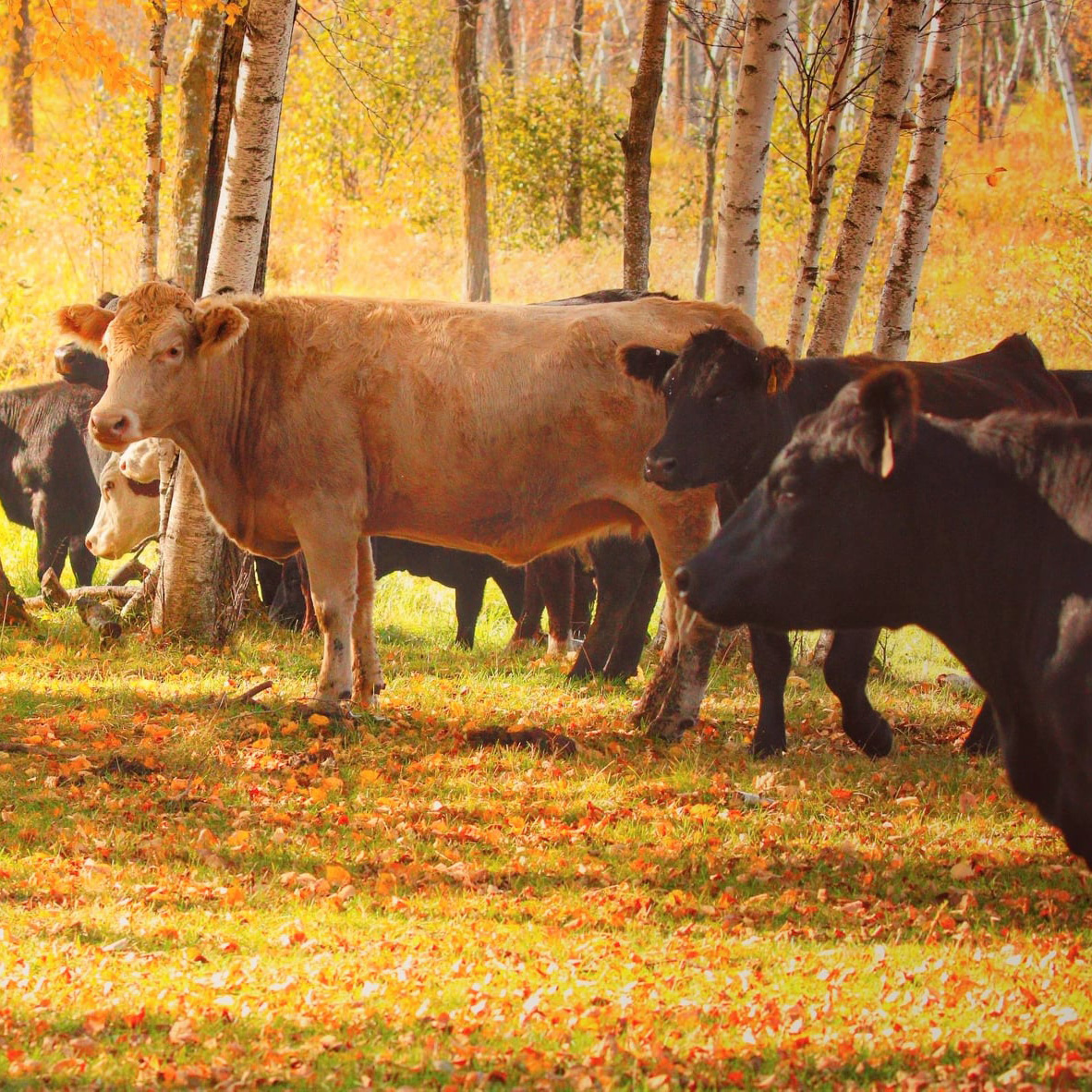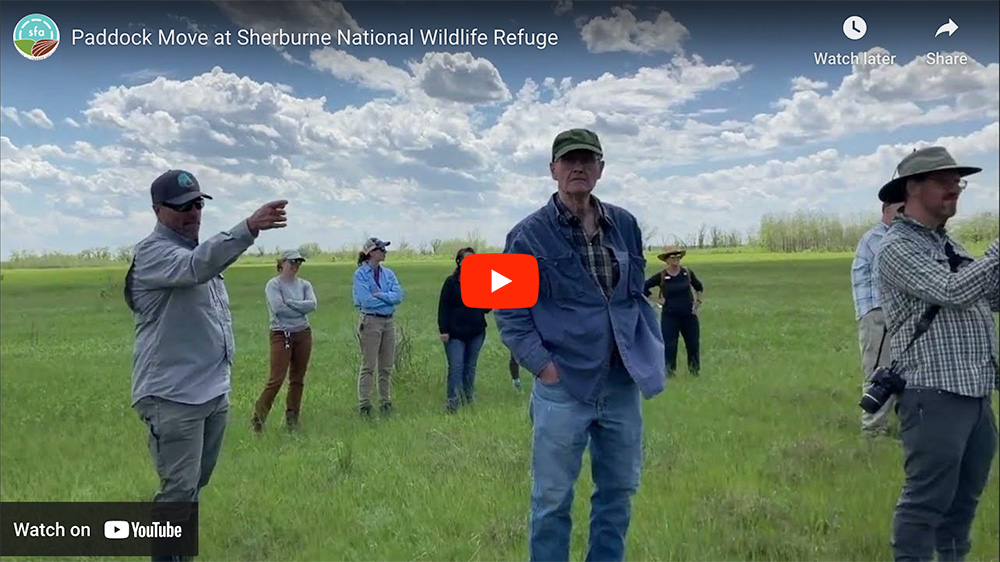Agroforestry & Silvopasture
Managed grazing in woodlands using adaptive forage and forest management
Our silvopasture and agroforestry program researches and teaches the practice of managed grazing in woodlands using adaptive forage and forest management techniques. We work with farmers, agricultural and natural resource professionals and conservationists throughout the state on how to use this regenerative ag practice.
Silvopasture is the intentional practice of managing timber, forage and livestock on the same acres to create income opportunities on often under-utilized land. Using managed grazing techniques, sound timber management and 21st-Century fencing technology, silvopasture offers a great opportunity to help restore the over 660,000 acres of Minnesota woods and forest that are not achieving their full potential for the landowner and society.
For more information, contact: Tyler Carlson, Silvopasture & Agroforestry Project Lead, tyler@sfa-mn.org or 844.922.5573 Ext. 702
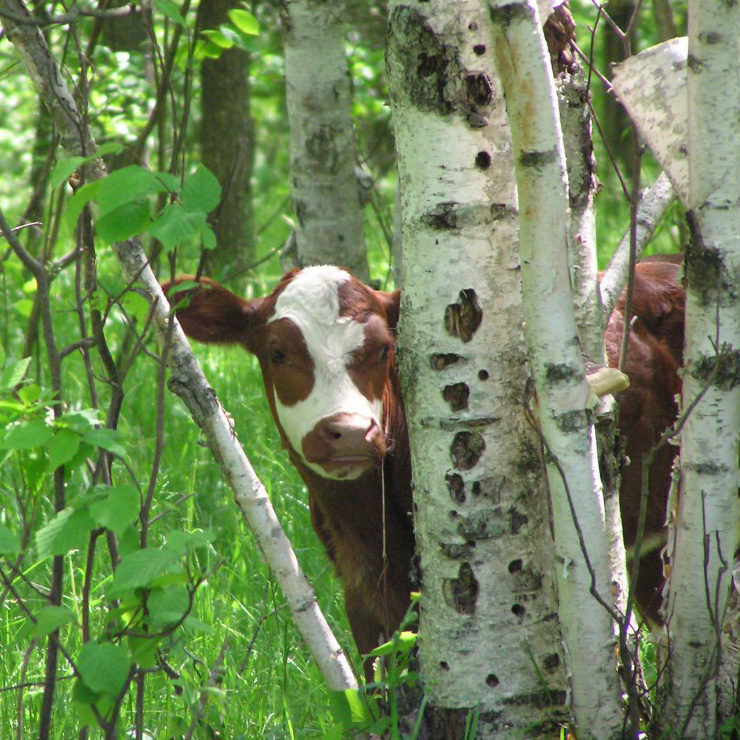
Agroforestry & Silvopasture Events
Check back for upcoming Silvopasture events!
Biochar
What is Biochar?
Biochar is produced by heating biomass (forest + crop residues or animal + food waste) in a specific temperature range (generally 200-700°C) with limited oxygen. This process is termed pyrolysis.
Biochar is a subset of charcoal produced with these specific parameters and holds promise for use as a soil amendment
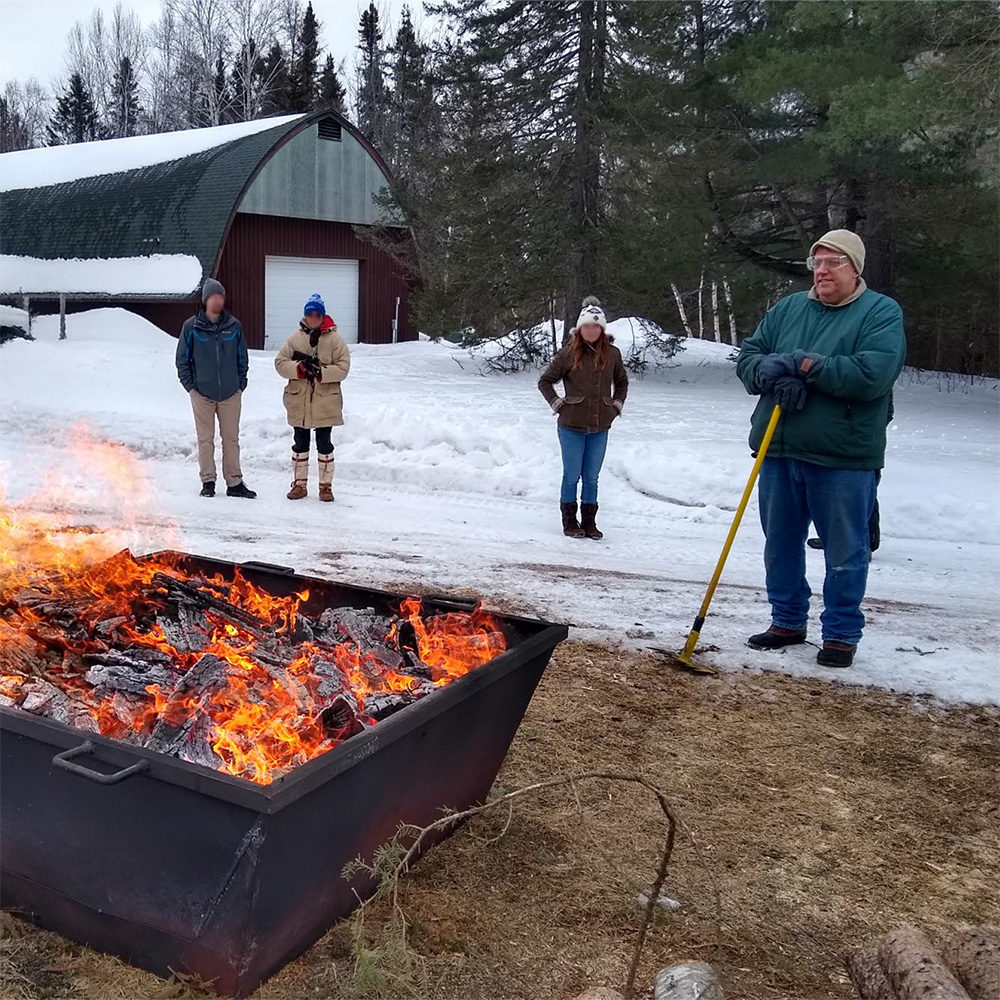
Carbon Sequestration
Pyrolysis converts the carbon in the feedstock to an extremely stable, condensed aromatic carbon structure.
This carbon form is so stable it may remain in soils for hundreds to thousands of years, and mav continuouslv build soil organic carbon stocks
Biochar Application
POTENTIAL BENEFITS
• May increase crop yield (results are more variable in fertile soils).
• If charged with nutrients (through mixing with compost or fertilizer or soaking in compost/manure tea) can act as a slow-release fertilizer.
• Increases water-holding capacity, which may translate to an increase in plant available water content.
• Increases cation exchange capacity.
• Generally reduces soil bulk density.
• Raises pH -> acts as agricultural lime.
• Reduces heavy metal and pesticide bioavailability.
• Can increase microbial activity and provide a nutrient-rich habitat for microorganisms.
• Co-composting (mixing biochar in during composting process) reduces nitrogen and phosphorus leaching, as well as GHG emissions.
How to Use
• Recommend testing biochar product and soil prior to application.
• Target biochar application to address specific needs or deficiencies:
- soils with low pH
- coarse (sandy) soils
- soils with low CEC
- soils with low carbon content
• Start with application to unproductive areas of farm, and small trial plots.
• Apply alongside another source of nutrients (especially nitrogen)
to avoid yield drag in first year.
- Co-composting charges biochar and speeds composting process.
• Can maximize lower application rates by targeting the root zone.
• Longer-lasting benefits with less tillage (pressure breaks down biochar).
Next Steps
Future biochar research should reflect practical considerations of on-farm production/application: lower application rates and mixed feedstock from multiple species.
Dr. Kurt Spokas, at the USDA-ARS, is leading work on citizen science, collecting data and analyzing soil following biochar application. Partners on this project are discussing methods to find funding and pursue on-farm trials.
Jim Doten, at the City of Minneapolis, is leading efforts to install a large-scale biochar production facility in Minneapolis and develop a regional biochar market. This local work may be useful for determining how/if to proceed with regional production of biochar in Central Minnesota.
Biochar production would provide an important alternative to burning wood waste or allowing it to rot, and would sequester carbon and potentiall improve soil conditions and increase crop vield. Carbon markets or funding for farmers to apolv biochar mav be necessary for economic viability.
Get Involved!
Contact Central SFA: central@sfa-mn.org
Contact Kurt Spokas - Research Soil Scientist, USDA-ARS Office: 612-626-2834, Kurt.Spokas@usda.gov
Contact Jim Doten: Jim.Doten@minneapolismn.gov
More info: z.umn.edu/biocharSH
Blog: Consulting Opportunities
Tyler Carlson | March 20, 2024
By now most of you have heard that we’re well into our 1st year of funding from the LCCMR for our project: Restoring Forests and Savannas Using Silvopasture – Phase 2. In addition to field days, demonstration workshops, fencing workshops, and webinars, this grant provides a limited amount of funding for members to receive 1-on-1 virtual and on-farm consulting for silvopasture.
Typically, I will schedule a 1-hour virtual visit to discuss your site, your current operations, and farm enterprise and management goals. After getting that background we will schedule a 2-4 hour site visit at your farm. When appropriate, I will bring in local resource professionals from other agency offices such as your local SWCD or NRCS. Email, phone, and virtual meetings can follow up the initial site visit as needed as you get going with your project.
For those looking to get some technical advice on tackling this on your farms feel free to reach out to me at tyler@sfa-mn.org. This opportunity is silvopasture-specific. For consulting from SFA in other areas, please visit our Farmer Support page.

Funding for this project was provided by the Minnesota Environment and Natural Resources Trust Fund as recommended by the Legislative-Citizen Commission on Minnesota Resources (LCCMR).
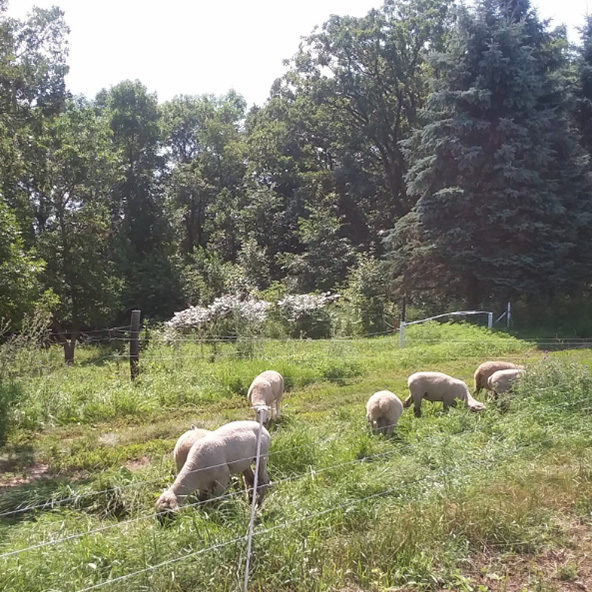
Silvopasture Learning Network
In early 2024, we launched a new Facebook Group called the Silvopasture Learning Network. This group serves a network of farmers, foresters, and other land and resource professionals engaging with silvopasture in the upper Midwest, with a specific focus on restoring oak savanna.
We've got a number of field days, workshops, and demonstration days in the works for the next few years as well as continued research out at the Sherburne National Wildlife Refuge. Click here to join the group to stay informed on upcoming field days and workshops and to engage with others in the network on a variety of topics.
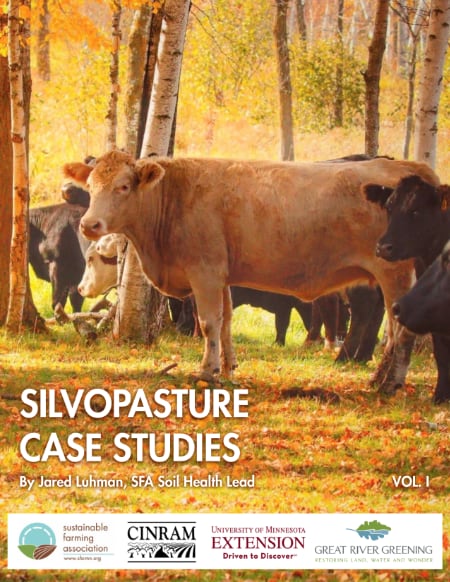
Silvopasture Case Studies
SFA recently published a compendium of five case studies featuring farmers who practice silvopasture and agroforestry. Researched and written by Jared Luhman, SFA's Soil Health Lead, these case studies feature farmers throughout Minnesota who have been using silvopasture practices for three or more years and whose stories offer tangible examples, support, and encouragement to others.
Silvopasture at Sherburne
The Sherburne National Wildlife Refuge in Zimmerman, MN spans 30,700 acres on the Anoka Sandplain, and is largely oak savanna. The refuge is home to a wealth of wildlife diversity, including the sandhill crane, Blanding's turtles, and wild turkeys. And, since 2013, sometimes cattle.
For nearly three years, University of Minnesota researcher Austin Yantes, seasoned graziers Kent Solberg and Doug Voss, and an assortment of other partners have been studying the impact of targeted grazing on vegetation management and restoration of oak savanna at the Refuge. Watch a video of the herd moving to a new paddock at our June 2022 field day.
Agroforestry & Silvopasture Resources
- All
- Case Studies
- Fact Sheets & Reports
- Handbooks
- Podcasts
- Videos
- Webinars

